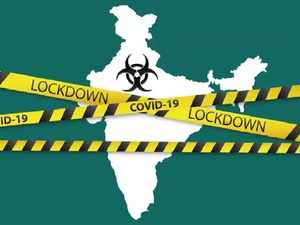
India may be losing close to Rs 40,000 crore daily due to the national lockdown with an estimated loss amounting to Rs 7-8 lakh crore during the past 21 days.

COVID-19 CASES
WorldIndiaConfirmed10,815Deaths353Confirmed1,917,320Deaths119,483With prime minister Narendra Modi promising a cautious, district-wise, phased relaxation of the lockdown from April 20, industry is hoping that factories would start humming again diminishing the spectre of a shrinking economy and widespread job losses.
“Prime Minister has also provided a guidance on exit from the lockdown after 20 April which helps industry plan better,’’ Chandrajit Banerjee, director general, CII, said in a statement. Banerjee hoped that government will also announce support measures for industry, especially small and medium sized units.
There appears to be a general agreement that the economy cannot remain in lockdown for long and some risks are unavoidable. “There is a trade-off between the pandemic and livelihoods,’’ says Mahesh Vyas, managing director and CEO of the Centre for Monitoring Indian Economy. “But it cannot be done from Delhi. It is a matter of local intelligence, local infrastructure and local administration,’’ Vyas told ET over phone. Fiscal support and concessions are pretty much what the central government can do anyway. The larger responsibility lies with the state and local governments where industrial units are located.
Industry has suggested colour-coding—red, amber and green—hotspots and their surrounding areas for controlling access and movement. “The principle should be that we look at opening up in concentric circles around the red zones. The radiating heat map should turn from red in the inside to green on the outside,’’ Banerjee said in a separate statement April 12.
The industry body’s `Exit from Lockdown’ strategy envisages the ramp up for returning employees from 50% to 75% to 100% over a period of time and restart to begin with locations which have a lower incidence of the outbreak, followed by the ones with moderate impact. It has prioritised textiles, pharmaceuticals, food processing and metals and minerals, all export intensive sectors for starting up in the first phase.
India may be losing close to Rs 40,000 crore daily due to the national lockdown with an estimated loss amounting to Rs 7-8 lakh crore during the past 21 days. Close to 40 million jobs are at risk during the period April-September 2020, according to FICCI.
A former secretary in the ministry for commerce and industry says the government will have to open up public transport in a limited manner and smoothen trucking along national highways. “That would also mean that hotels, restaurants and garages along the highways also will have to function even if in a limited manner,’’ he told ET on condition of anonymity.
The former secretary too says that the key to making it a success lies with local governments and the centre has little role to play except making sure coordination between states and fiscal support where required.
Local governments have to ensure that workers and industrial units follow guidelines and stick to rules and procedures laid down to fight the pandemic. Administrations in hotspots have to monitor traffic and people if a major road or highway passes through them to make sure that the local population doesn’t come in contact with the transiting people, he said.
CII has suggested detailed guidelines and standard operating procedures for each industry to maintain social distancing and safe operating practices. The experts ET spoke to agree that the challenge lies at the local level and the ability of the higher ups to delegate authority and responsibility to lower rungs of administration while keeping a strict watch on the overall scenario.
Some states like Kerala are ready with a withdrawal plan. The strategy should be “gradual, phased and calibrated to ensure that caseload is always kept below the (surge) capacity of the healthcare system to deal with it’’, a 17-member committee headed by former chief secretary KM Abraham recommended on April 7. It suggested districts as designated units for relaxing restrictions and wanted auto, taxis and buses to be allowed to ply short distances and small and medium enterprises to start in a limited manner only in the second phase.
Source: indiatimes.com

